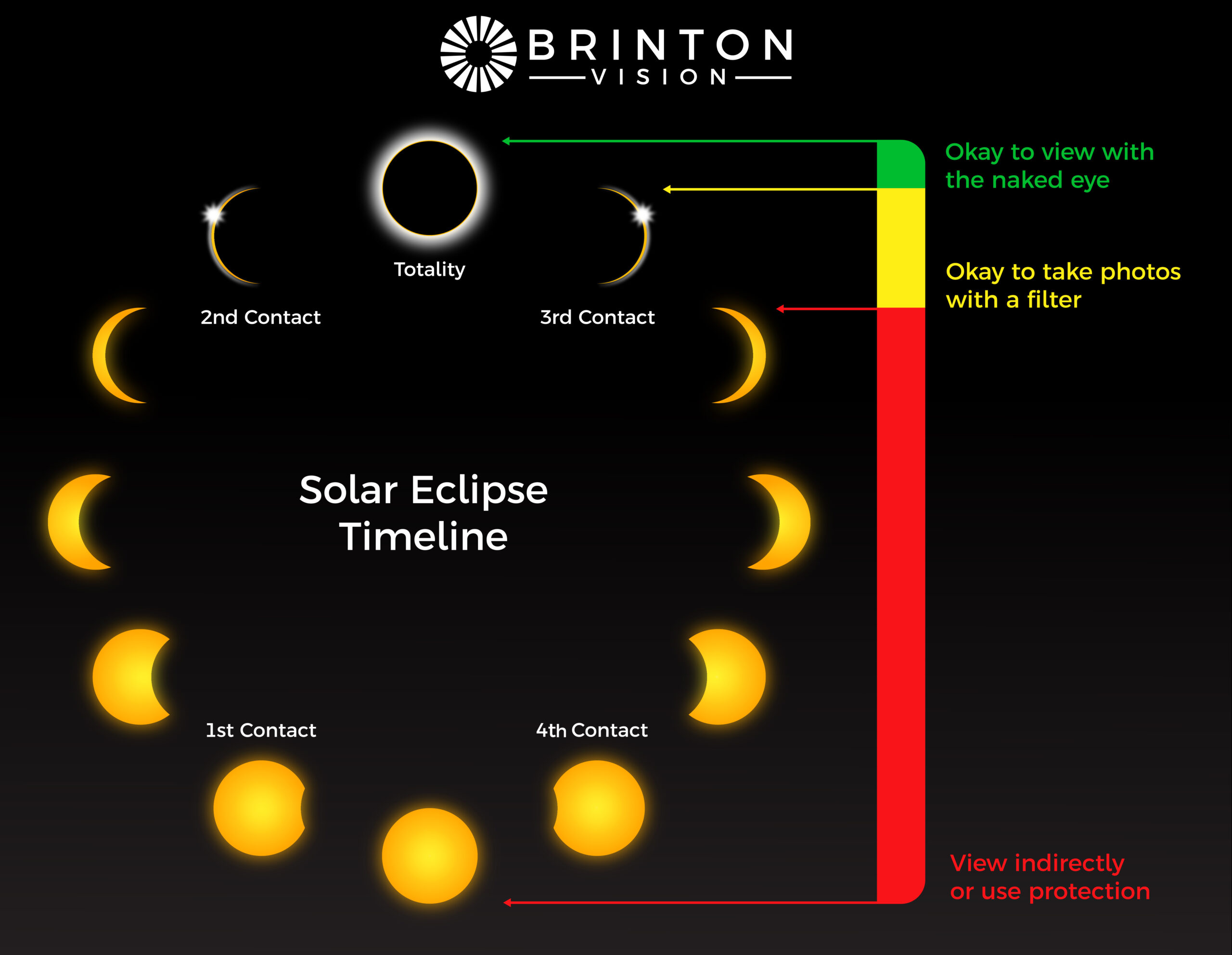Tips on how to safely view the solar eclipse in April
St. Louis LASIK surgeon Dr. Jason Brinton was interviewed on Fox2 News on March 22, 2024 to discuss the upcoming solar eclipse.
The Sun’s brilliance is so intense that staring at any part of it, no matter how small, can cause damage to individual retinal cells. Even a brief glance can lead to a spot in your vision that matches the size of the solar surface you observed, which may persist or fade over time depending on the extent of retinal damage. Since every person’s retinal sensitivity varies, it’s risky to assume you can look away quickly enough to prevent eye damage.
Figure 1. Retinal color photographs and OCT scan images of solar retinopathy, highlighting the characteristic yellow spots located at the center of the retina. The OCT scan reveals thinning of the retina in the central area, suggesting irreversible damage and the loss of central vision.
To safely observe the Sun’s appearance, utilize proper solar viewing glasses. Alternatively, you can explore thousands of images of the Sun online, captured by telescopes and NASA spacecraft.
Why Direct Sun Observation Is Unsafe
The rods and cones in the human retina are highly sensitive to light. Under normal daylight conditions, the iris contracts to limit the amount of light reaching the retina. However, even a small sliver of the Sun’s light can cause eye damage. Exposure to direct sunlight can harm retinal cells, sometimes permanently, making it imperative to avoid direct Sun observation. Instead, use solar viewing glasses or a telescope with proper filters.
Is it Safe to Look at the Sun During a Total Solar Eclipse?
During a total solar eclipse, the Sun’s bright photosphere is fully covered, leaving only the faint light from the corona visible. Contrary to popular belief, this radiation is too weak to pose any harm to the human retina. Therefore, it’s safe to directly observe a total solar eclipse without protective eyewear during totality. However, protective measures should be taken before and after totality when the Sun’s disk is partially visible.
Figure 2. The American Academy of Ophthalmology recommends taking the following precautions. Before using solar filters or eclipse glasses, inspect for damage. Follow instructions carefully, especially when supervising children. Use eclipse glasses or a solar viewer and never remove them while looking directly at the sun. During a total eclipse, it’s safe to briefly observe without filters, but resume using them when the sun brightens. Avoid using unfiltered cameras or optical devices to view the sun. Consult an astronomer for special filter usage.
Effects of Sun Staring on Eyes
Staring at the Sun can result in blurred vision, dark spots, pain in bright light, or central vision loss. Permanent retinal damage can occur in ~100 seconds, though this timeframe varies based on factors like the Sun’s intensity and pupil dilation.
Where to Obtain Proper Solar Filters
For trusted solar filter vendors, refer to the American Astronomical Society’s website.
Understanding Sun-Related Risks
While solar filters and eclipse glasses shield against intense sunlight, infrared heat from the Sun can still cause discomfort by warming the eye. It’s essential to periodically glance away from the Sun to prevent overheating.
Photographing the Eclipse Safely
You can photograph the eclipse with a smartphone, but ensure a specialized eclipse filter is positioned between the camera and the Sun to prevent damage.
“I still remember from the last eclipse people coming out of our building with multiple pairs of sunglasses on. I’ve got news: it doesn’t matter if you’ve got two, three, or four. No matter how dark they are, that does not qualify,” Dr. Brinton said. “Looking through a camera viewfinder does not qualify. Looking through a telescope or binoculars or anything, even with various filters, those filters do not appropriately protect your eyes from the sun.”


